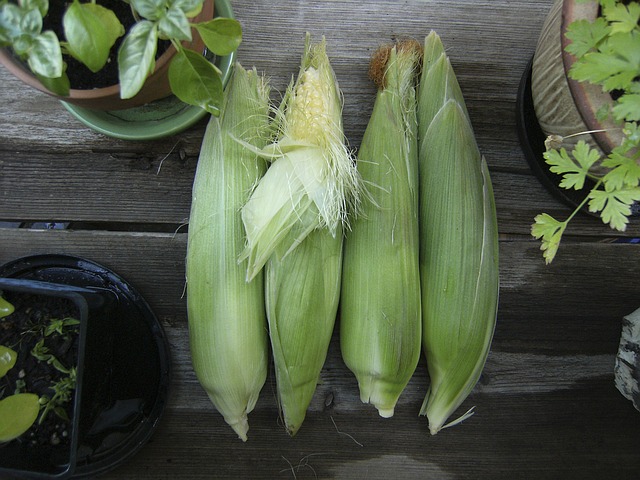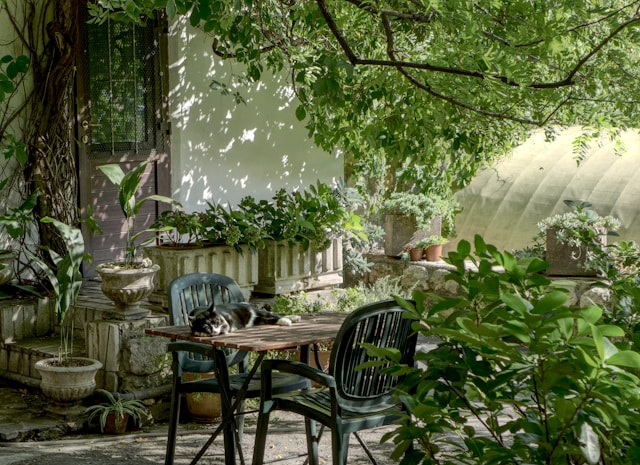The fluttering of a butterfly’s wings can effect climate changes on the other side of the planet. ~ Paul Erlich
Where could life be more abundant than in a native natural forest? Envision the tranquility of wildlife unfolding in a place unhampered by humankind.
Everything within all works together without any person needing to step in and pull up weeds. The lushness of trees and foliage needed no help with fertilizers. The native forest doesn’t require constant watering from a garden hose. The animals, birds, reptiles, aquatic life and insects all live in complete harmony within. In return, they nourish the forest with what the forest supplied for them.
Can you imagine a home with the same kind of harmony within your landscape? How about a landscape lush with fresh fruit and vegetables to fill your pantry?
This all can happen in your very own backyard with some simple planning and design. It is actually a very exciting venture! One similar to an artist starting out with a blank canvass, only you will be painting your very own edible forest filled with your favorite things.
Understanding How a Forest Works
This can be achieved by a simple diagram. First, notice the tallest trees at the top and how everything tiers down. The underlying canopy next from the largest tree steps down to smaller variates on to large, medium and small shrubs, then stepping down to tall growing plants to simple ground covers. And don’t forget the vines!
Everything ends up on your forest floor as it goes through the seasonal cycles. The forest floor is what creates healthy living soil teaming with beneficial microorganisms, nutrients, and moisture.
Then the reverse effect takes place in that the plants, shrubs, and trees. They take back up the nutrients in which they need from the soil through their root systems. It all occurs quite naturally.
Where to Begin with My Forest Garden Design
This is where the fun begins for starting an edible forest garden! We start out by creating a Natural Canopy. This begins with tiers or stair steps from the tallest of Trees working its way down in size to shrubs, plants and to the smallest blade of grass.
The canopy will do several helpful things. It will slow down unwanted weed growth by blocking the soil from sunlight and help the soil retain moisture. It also allows for a natural mulch as leaves fall and as a living mulch when the proper spacing of the canopy takes place. When the right combinations are in place the canopy serves as a natural source of nutrients for other plants and trees by creating healthy soil as well.
All things must be kept native and natural according to your own region. Hybrids may be included, but should not be the main focus.
Companion plants must be used for each area of growth. They will work together creating in harmony attracting beneficial insects and repelling the bad bugs. Many companions aid their neighbors by invigorating its growth or by putting nutrients back into the ground.
1. TREES – are what stand out the largest within a forest. It is important for a healthy canopy of trees to include many native trees. They will benefit the entire health within a natural ecosystem. Investigate what they are and pick out some favorites. Then move on to choosing fruit and nut trees specific to your neck of the woods.
Plan appropriate spacing and diversity. Take into consideration which way the trees will cast shade. Plan your companion plants and edible crops to correspond to the sun and shade opportunities and requirements.
Heirloom Red Cabbages growing with Violets and Strawberries under a nearby Guava tree
2. SHRUBS – these can be a great deal of fun! Incorporate different native shrubs for color and textures. Many different types of fruit trees can be grown as shrubs and may actually produce more fruit. Space them out throughout the landscape. This will help create more natural habitats and beckon beneficial pollinators and other wildlife.
A good example of this might be where our Blackberry bushes are growing. The long slender branches help create shade during the hot months of summer for many companion vegetables and herbs that in turn benefit the bushes by creating a natural ground cover, repelling certain insects and attracting the good ones. Keep stepping down in tiers beneath the shrubs and bushes. Lettuce, spinach on down to strawberries and thyme ground covers grow together in our Blackberry patch.
3. Flowering Plants, Vegetables and Herbs – as many native varieties as possible, different heights and widths intercropping together in harmony. Create color, attract bees and butterflies.
Beautiful Red Cabbages nestled in an array of lower-growing native wildflowers such the violet is pretty as well as a natural ground cover.
A nearby fruit tree such as the Guava grown as a shrub that will cast a little shade during the hotter months will protect the cooler season vegetables and edible wildflowers growing nearby and prolong their growing period.
Cucumbers vining over the top of perennial strawberry plants protect them from the blazing sun during July and August. Add some herbs such as Basil to these beds as well that grow tall and bushy will help cast shade on the cucumbers protecting them from the afternoon heat.
Tall plants such as the sunflowers, okra, and corn with watermelons, squash or cantaloupe growing at their feet with vines of beans growing up their stocks much as the original concept of Native American Three Sisters methods. Always keep in mind to
inter-plant things such as peas and legumes that act as nitrogen-fixing plants when turned back into the soil. They are compatible with most other plants.
It’s Your Time To Share
What an opportunity to learn from each other! Natural Gardeners across the countryside have favorite combinations of plants and trees incorporated throughout their gardens. Now would be a wonderful time to for you to share with others some of your favorites, tried and true.
- Wild Dagga Motherwort Medicinal Herb - November 11, 2013
- Grow The Best Organic Lettuce - November 4, 2013
- Amish Hot Pepper Mustard - October 23, 2013


Love your page; this is how my happy garden lives. So rewarding.
I’m so happy to hear about your Happy Garden Joan! Natural Gardening is such a beautiful thing! Thank you so much for visiting 😉